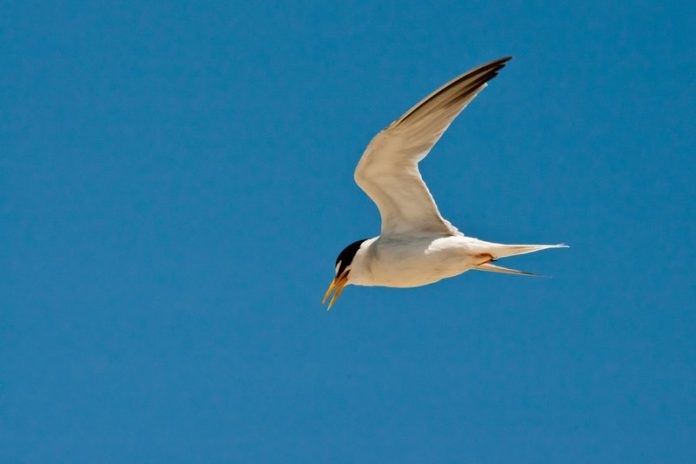The U.S. Fish and Wildlife Service announced today that the interior least tern, a small bird that nests along major rivers in the midwestern and southern United States, has fully recovered and can be removed from the endangered species list.
Endangered Species Act protections have helped interior least tern numbers expand nearly tenfold over the past three decades.
“This small, scrappy bird has struggled to survive for so long, and thanks to the strong protections of the Endangered Species Act it’s been brought back from the brink of extinction,” said Stephanie Kurose, a senior policy specialist at the Center for Biological Diversity. “The tern’s epic journey toward recovery shows what a powerful tool the Act is for fighting the ongoing wildlife extinction crisis.”
Interior least terns are the smallest of North American terns. Least terns in the interior population prefer nesting on open sandbars near wide river channels. They live along major Midwestern rivers such as the Missouri, Mississippi, Ohio and Arkansas, along the Red River in Louisiana, and the Rio Grande River in New Mexico and Texas. In winter they migrate to coastal areas of Central and South America and the Caribbean Islands.
Before the species was protected as endangered in 1985, the number of interior least terns had plummeted below 2,000 birds due to changes to river systems from dams, dikes, reservoirs and water diversions, which eliminated most of their historic nesting habitat. Natural wide channels dotted with sandbars have been replaced by narrow, armor-banked rivers with highly altered flows. The spread of invasive plants also reduced suitable tern nesting habitat. Recreational activities on rivers and sandbars can disturb them when they’re nesting, causing them to abandon their nests.
But the birds have proven resilient to habitat changes and have benefited from improved river management to create suitable habitat. The interior least tern population is now estimated at roughly 18,000 individuals.
“Protecting these birds not only saved them from extinction but also helped us manage the surrounding ecosystem better,” said Kurose. “Restoring the tern’s river habitat to more closely mimic natural flows improved river health and benefited many other species that call those same places home. The Service should continue this important work to improve the health of all rivers across the country.”





























